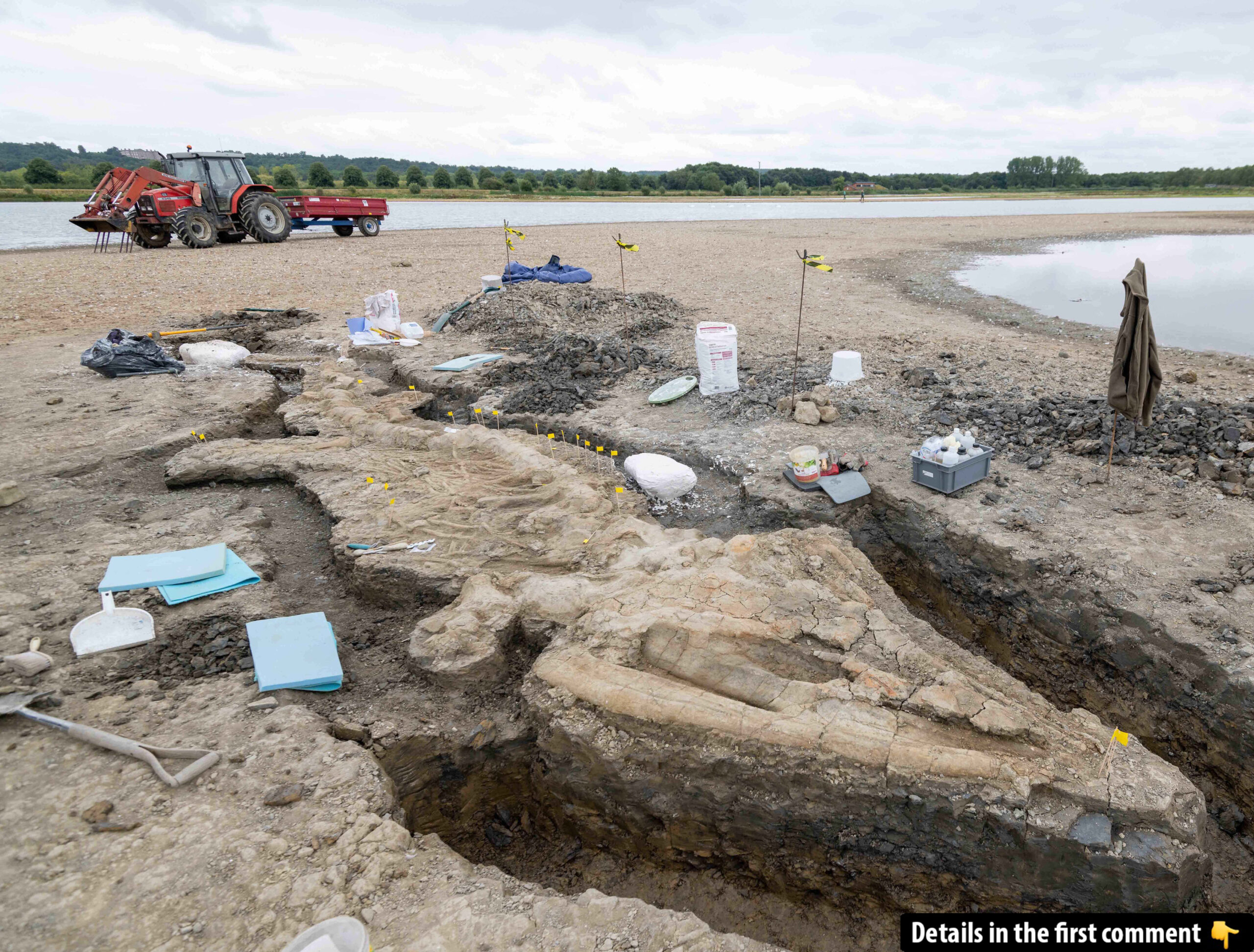In a groundbreaking archaeological excavation, a team of palaeontologists unearthed the largest and most complete ichthyosaur skeleton ever found in the UK. Discovered in Rutland, England, this fascinating fossil represents the Temnodontosaurus, a marine reptile that lived over 180 million years ago. The discovery is monumental not only because of its size but also because it is possibly the first ichthyosaur of its species found on British soil. This excavation, led by ichthyosaur expert Dr. Dean Lomax and his team, has unveiled a wealth of information about ancient marine life and the unique ecosystem of the Early Jurassic period.
What Are Ichthyosaurs?
Ichthyosaurs, often mistaken for dinosaurs, are marine reptiles that lived during the Mesozoic Era, from the Triassic to the Cretaceous periods. Despite their reptilian characteristics, ichthyosaurs were not dinosaurs. They spent their entire lives in the sea and evolved to resemble modern dolphins in body shape, with streamlined bodies, large eyes, and long jaws filled with sharp teeth.
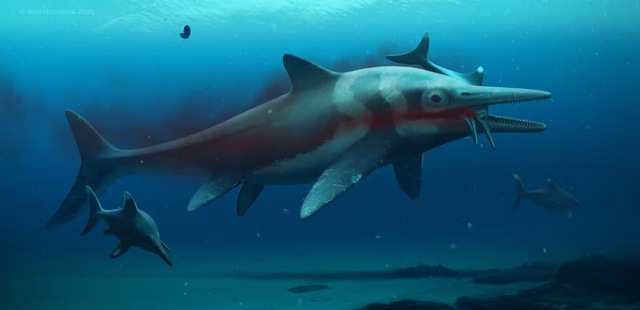
Unlike dinosaurs, which were land dwellers, ichthyosaurs thrived in the oceans, where they became dominant predators. The Rutland ichthyosaur, specifically the Temnodontosaurus, is part of the ichthyosaur family and lived during the Early Jurassic period.
Video
Don’t miss this video showcasing the discovery of a complete ichthyosaur skeleton found in the UK, offering a rare glimpse into prehistoric life.
The Discovery and Dating of the Rutland Ichthyosaur
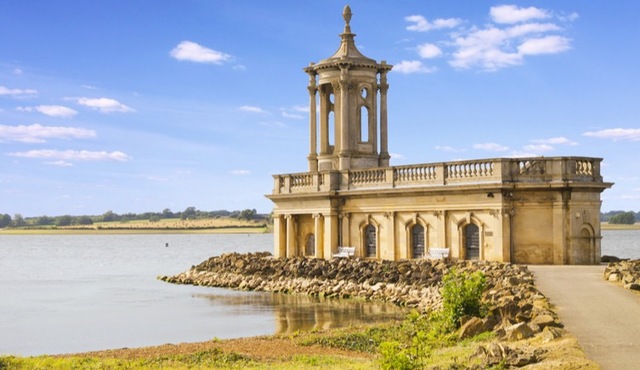
The discovery of the Rutland ichthyosaur was made possible by the keen eye of local amateur fossil hunter Joe Davis, who spotted the fossilized remains while exploring a site in Rutland. The excavation team quickly sprang into action to uncover this rare find. The importance of this discovery lies not just in its size and preservation, but also in its age.
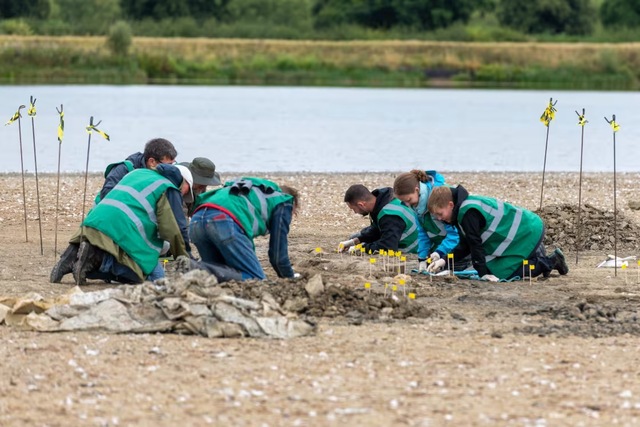
The fossil is dated to be approximately 182 million years old, based on the surrounding strata and the analysis of index fossils such as ammonites and belemnites, which are commonly found in the Whitby Mudstone Formation. Through this meticulous process, palaeontologists were able to accurately pinpoint the ichthyosaur’s time of existence between 182 and 181.5 million years ago.

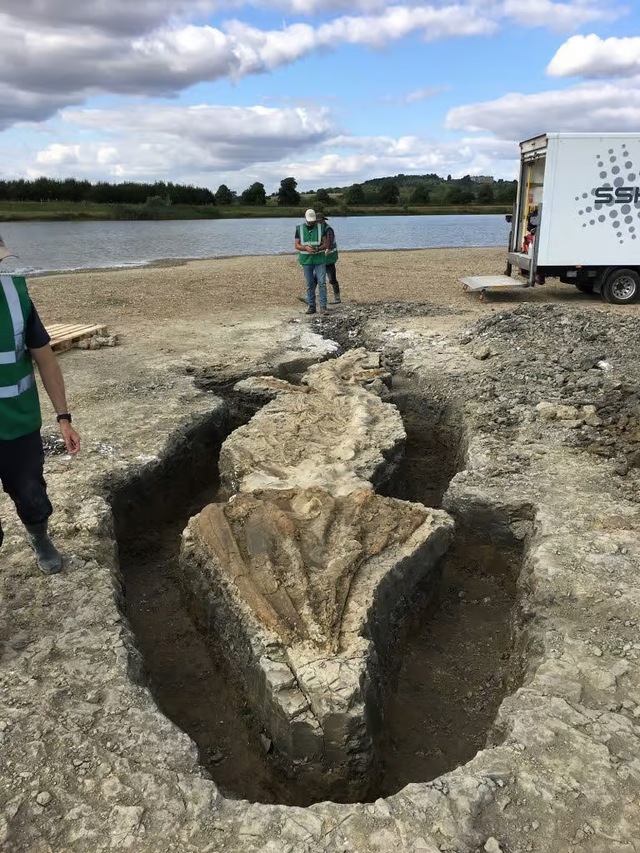
The Era of the Ichthyosaurs: The Mesozoic Period

Ichthyosaurs lived during the Mesozoic Era, a time when the Earth was home to some of the most incredible creatures ever to roam the planet. This period, which spanned from 252 to 66 million years ago, is divided into three main segments: the Triassic, Jurassic, and Cretaceous periods.
The ichthyosaur family first emerged in the Triassic period, around 250 million years ago, and quickly became one of the most successful marine groups, diversifying into various forms throughout the Mesozoic. The Rutland ichthyosaur, however, lived during the Early Jurassic period, a time when ichthyosaurs were still adapting to their aquatic environments, before the eventual mass extinction that wiped them out in the Late Cretaceous.
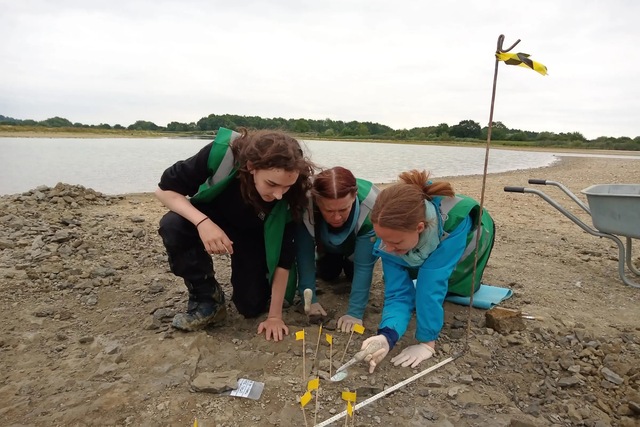
Diet and Behavior of the Temnodontosaurus
As an apex predator, the Temnodontosaurus would have been at the top of the food chain in the Early Jurassic seas. With its long, powerful jaws and sharp teeth, it likely preyed on a variety of marine animals, including other reptiles like plesiosaurs and smaller ichthyosaurs, as well as fish and squid.
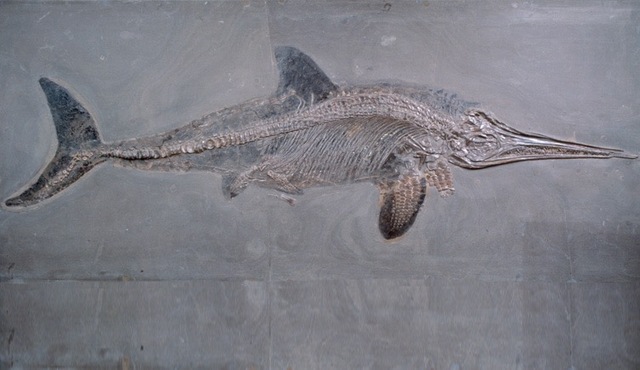
One of the most intriguing aspects of the ichthyosaur’s diet is its adaptability. Fossil evidence suggests that the Temnodontosaurus had a diverse diet, making it one of the most formidable predators of its time. Additionally, the large eyes of the ichthyosaur point to its ability to hunt in low-light conditions, potentially indicating that it hunted during deeper, darker waters of the ancient seas.
The Size of the Largest Ichthyosaurs
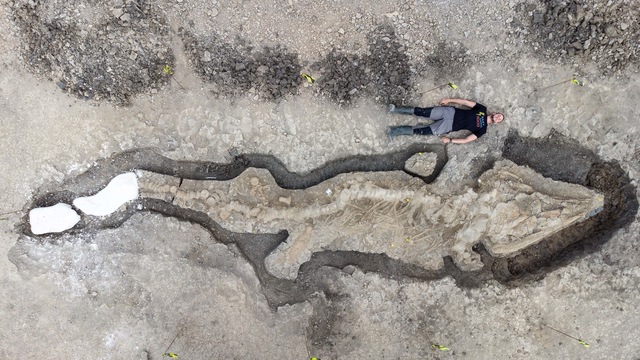
Ichthyosaurs varied in size, with the largest known species being the Shonisaurus sikanniensis. This massive marine reptile could grow up to 21 meters in length, making it one of the largest predators to ever inhabit the Earth’s oceans. However, some recent discoveries have suggested that other ichthyosaurs, such as the one discovered in Somerset, could have reached lengths of over 25 meters, rivaling the size of modern-day whales.
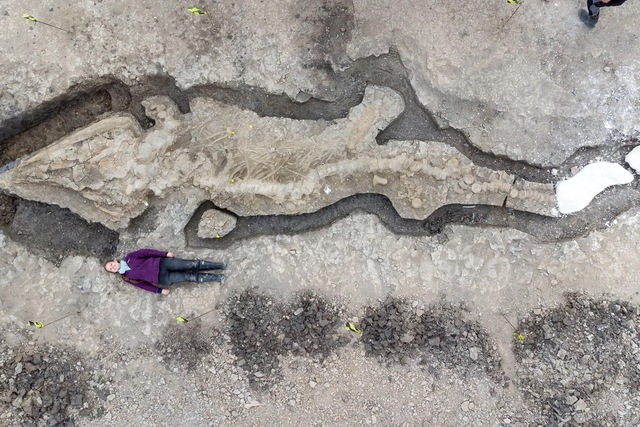
These giant ichthyosaurs would have been apex predators, much like the Temnodontosaurus, and would have hunted massive prey such as other marine reptiles and large fish. These discoveries highlight the incredible diversity of ichthyosaurs and their role as dominant marine creatures during the Mesozoic Era.
Global Distribution of Ichthyosaurs
Ichthyosaurs were not confined to one region of the world. Fossils of these marine reptiles have been discovered on every continent except Africa, providing valuable insight into their global distribution. In the UK, ichthyosaur remains are particularly abundant along the Jurassic Coast, a World Heritage Site in southern England, and along the Yorkshire Coast.
The first scientifically recognized ichthyosaur was discovered in 1811 by the pioneering fossil hunter Mary Anning, whose work has contributed significantly to the understanding of ancient marine life. Today, the Rutland ichthyosaur adds to the wealth of ichthyosaur fossils discovered in the UK, expanding our knowledge of these ancient marine reptiles.
Coexisting Dinosaurs and Ichthyosaurs
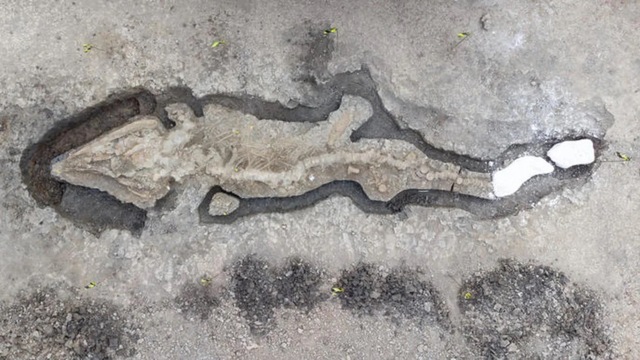
While ichthyosaurs ruled the oceans, land-dwelling dinosaurs dominated the Earth’s surface. During the Early Jurassic, dinosaurs such as Dilophosaurus roamed the land, while ichthyosaurs like the Temnodontosaurus patrolled the seas. In regions like southern Africa and parts of Asia, various dinosaur species, including herbivores like Lesothosaurus and carnivores like Cryolophosaurus, coexisted with ichthyosaurs.
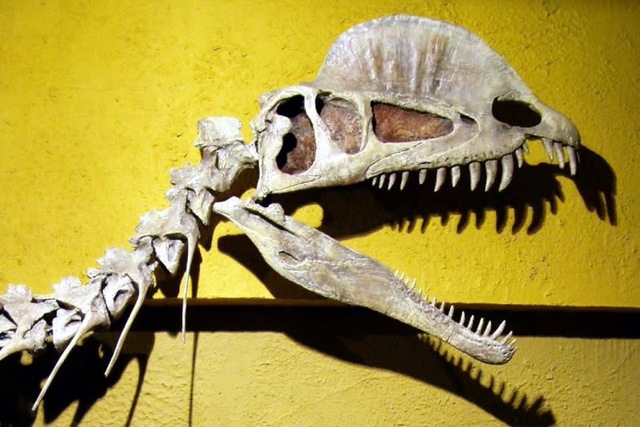
In the UK, the Early Jurassic period saw the presence of small theropods like Sarcosaurus, while ichthyosaurs like the Temnodontosaurus swam in the surrounding waters. This coexistence of land-dwelling dinosaurs and marine reptiles offers a fascinating glimpse into the diversity of life during the Mesozoic Era.
The Discovery of Other Fossils in Rutland
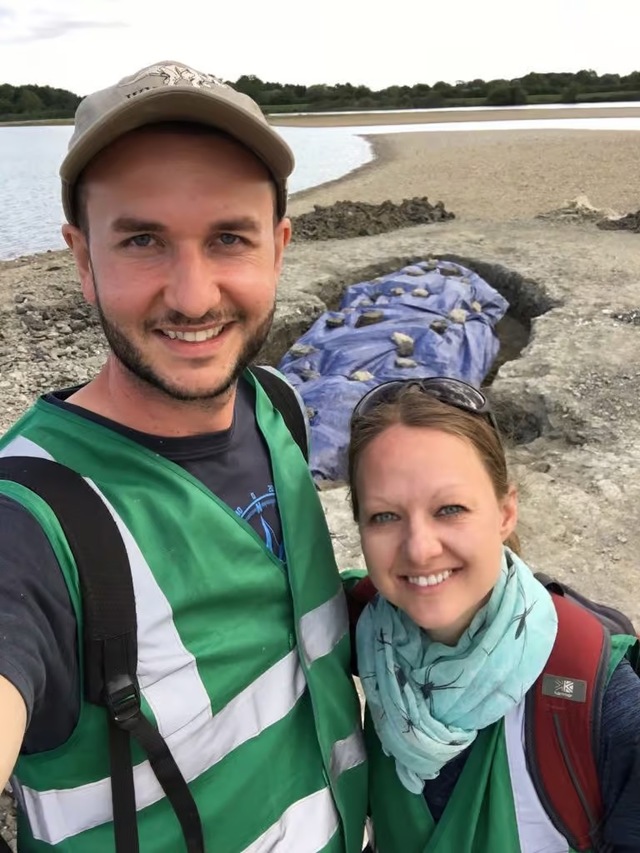
The Rutland area is known not only for its ichthyosaur discoveries but also for its dinosaur fossils. The “Rutland dinosaur,” a Cetiosaurus, was discovered in 1968, and although it lived several million years later than the Rutland ichthyosaur, it adds another layer of historical significance to the region.
The discovery of these fossils in Rutland highlights the area’s importance as a site of paleontological interest. Together, the ichthyosaur and the Rutland dinosaur help to paint a clearer picture of life during the Jurassic period, showcasing the diverse marine and terrestrial ecosystems that existed millions of years ago.

Video
Check out this video with Nigel Larkin as he explores the incredible discovery of the Rutland Sea Dragon, a fascinating find from ancient history.
Conclusion: The Legacy of the Rutland Ichthyosaur
The discovery of the Rutland ichthyosaur has significantly contributed to our understanding of marine life during the Early Jurassic period. As one of the most complete and largest ichthyosaur skeletons found in the UK, it provides invaluable insights into the physical characteristics, diet, and behavior of these ancient marine reptiles. The excavation of the Rutland ichthyosaur adds to the growing body of evidence that helps to piece together the puzzle of prehistoric life on Earth.
As researchers continue to study these fossils, the Rutland ichthyosaur will undoubtedly play a crucial role in expanding our knowledge of the Mesozoic Era and the creatures that once roamed our planet. With each new discovery, we come closer to understanding the complex and fascinating history of life on Earth.
